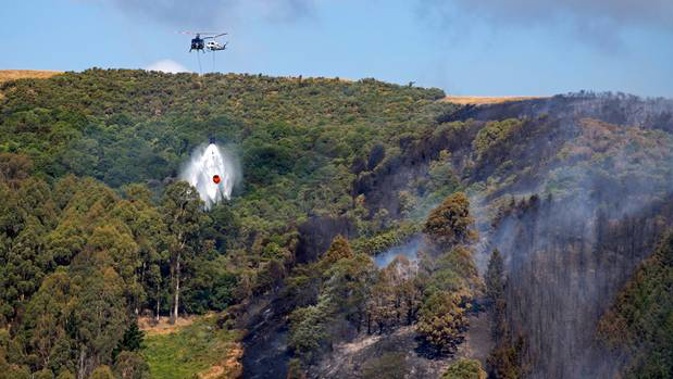
The cause of one of New Zealand's largest-ever wildfires has been ruled accidental, an investigation has found.
The Pigeon Valley fire, which began on February this year, eventually burned around 2300ha of commercial plantation forest, property and pastures, and had a final perimeter of 35km. A home and shed were also lost in the fire.
Fire and Emergency Principal Rural Fire Officer for Nelson Tasman Ian Reade says the final report into the blaze found the fire was caused by the use of farm equipment.
The fire was initially sparked by an agricultural contractor discing a rocky paddock.
The report found that sparks from the discing equipment - from metal on stone or metal on metal contact - ignited dry grass in the paddock.
Fuelled by southerly winds, the fire then quickly spread onto a steep recently harvested hillside of forestry nearby.
"This fire proves that, in extreme weather conditions, a seemingly every-day rural activity can end up causing widespread damage," Reade said.
The weather conditions in the area during the six weeks prior to the fire were
characterised by little or no rainfall, high temperatures, and often windy conditions. The
Nelson Tasman Rural Fire District was in a prohibited fire season at the time, meaning there was a total fire ban.
"It was the proverbial perfect storm," Reade said.
He says the conditions Nelson and Tasman experienced this summer were extreme, but not unique. Parts of Marlborough, Canterbury, Otago, Bay of Plenty and Northland all had similar fire risk profiles.
It is likely these conditions will become increasingly common during summer in many parts of New Zealand, particularly on the eastern seaboard, he says.
"It's important people take heed of our advice, which focuses on reducing the likelihood of fires starting, and mitigating the potential damage to property if a fire occurs," said Reade.
Rural firefighter Dave Houston manning a pump on the fringes of the Tasman bush fires in February. Photo / Mark Mitchel
"There are many simple things people can do to prevent fires starting, from not using machinery which can emit sparks in hot, dry and windy conditions, to ensuring electric fences are not in a position or used where they could spark onto dry vegetation.
"Steps can also be taken to protect property from a fire, such as removing material near the home that could be ignited by flying embers, for example leaves in gutters, firewood heaps by the house or timber stored under the house."
He says the most at-risk areas are properties which have large areas of grass, scrub or trees nearby.
"One very simple approach is to create a safety zone around your home, where trees and vegetation have been thinned out, pruned or cleared to create a barrier so the spread of fire towards the home is slowed."
Landscaping using fire resistance plants is also another very effective strategy, he says.
Fire and Emergency has also released fire investigation reports into two other fires that occurred in February at Atawhai and Rabbit Island. It is likely both these fires were deliberately lit.
Take your Radio, Podcasts and Music with you









